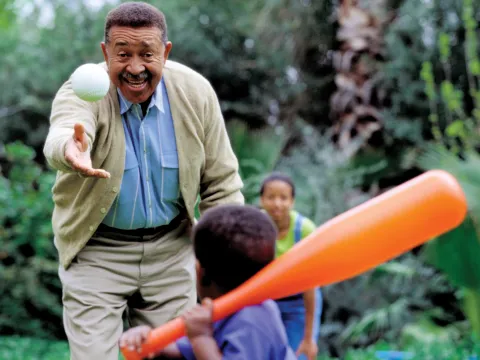- AdventHealth

Our bodies are about 60% water. So it seems like an easy concept that we need to replace those fluids when we lose them through sweat and exercise. But much like nutrition, there are varying opinions on how much to hydrate, with what, and how often.
Hydration can be both simple and complex. Staying hydrated on a daily basis is the best way to set yourself up to be adequately hydrated on your runs. Knowing how to address fluid requirements during runs and races will help you stay safe and perform your best under a variety of conditions. Practice makes perfect!
Hydration Concepts
While your hydration needs are partially dependent on your sex, height and weight, they are also heavily influenced by the duration and intensity of your activity, the weather conditions, and even altitude. Sweat rates differ from person to person, so individuals of similar builds running the same race at the same pace may still have different fluid needs.
But in general, estimates can be used. Sherri Flynt is a Registered Dietitian with AdventHealth and she notes that, “You can take your weight and divide it by two; that’s how many ounces of fluids you need per day.”
As a runner, the goal of hydration is to keep your body primed to run and recover well. At the most basic level, you are trying to avoid the two extremes: dehydration and hyponatremia, defined as a low sodium concentration in the blood. In runners and other athletes, hyponatremia is typically caused by drinking too much water relative to the amount of sodium in your body.
Knowing the warning signs of both of these extreme conditions is important. Though rare, they can become life-threatening if not addressed quickly.
Learn the warnings signs of dehydration:
- Fatigue
- Dry eyes
- Dry mouth
- Dark colored urine
- Cramps
- Headache
- Muscle Spasms
- Sweating decreases (or totally stops)
And the warning signs for hyponatremia:
- Bloating and a feeling of sloshing in your stomach
- Nausea
- Incoherence
- Disorientation
- Inability to drink more and/or urinate
- Seizures
Hydration Guidelines
The extreme conditions described above are a rarity, but they can occur even in experienced runners. Most of the time you’ll fall well within the range of “normal” hydration, but knowing how to tweak it to your advantage can help you feel and perform your best!
“Adequate” Hydration
Maintaining adequate daily levels of hydration will set you up successfully for long runs and harder workouts, but what does that mean exactly? The old adage of eight 8-ounce glasses of water per day may work for some but be too much for others.
If you aim for eight 8-ounce glasses of fluids (not just water), that recommendation becomes more accurate. Remember there is water in what you eat too, especially fresh fruits and vegetables.
Flynt agrees, saying “I encourage mainly water but that does get boring! Herbal tea works well but avoid things with high sugar or caffeine. Fruits and vegetables are also hydrating.”
Drink to Thirst?
South African professor and exercise scientist Tim Noakes popularized the idea of “drinking to thirst” in his controversial book Waterlogged. Raising attention to the problem of hyponatremia, he contended that drinking water to thirst was safer and maximized performance.
For basic day-to-day hydration and training in moderate weather conditions for shorter distances, this theory holds up. But when you’re running in more extreme conditions or over longer time periods, this maxim doesn’t always work. Most of the world’s best athletes follow a more structured hydration plan, and you’ll likely benefit from one as well.
Start your Runs Pre-Hydrated
Low intensity runs less than 60 minutes in length rarely require supplemental hydration. But starting a long run or workout by topping off your hydration stores can help you perform better throughout.
What does this mean in terms of volume? Approximately 2 hours prior to a run, drink about 16 ounces of fluid. This allows time for absorption so your stomach doesn’t feel too full or “sloshy.” Immediately prior to running, you can top off with another 4-6 ounces.
Set a Timer
While “drinking to thirst” may work for some scenarios, following a schedule for hydration can be beneficial during a longer training run or race. On the run, it’s easier for your body to ingest and absorb small amounts of fluid more often. 4-6 ounces every 20 minutes is an ideal goal to shoot for. If you aren’t sure what this translates to as your sipping from a pack or bottle, try measuring it out to gain a feel for the amount. It’s probably less than you think!
Long Runs vs. Races
Hydration requirements are extremely individual. Long training runs are the time to experiment with your hydration and nail down a strategy. Learn what fluids and supplements you can tolerate in a variety of conditions, so that race day presents no surprises.
Races that offer frequent water stops may encourage you to drink more than you typically do, so plan accordingly and know when to drink and when to keep moving.
Electrolytes and Salt Supplements
While not all runners supplement with electrolytes or salt, others swear by them in long races and hot conditions. Recommendations for salt vary dramatically from about 300mg up to 1000mg per hour, depending on conditions and if you’re a “salty” sweater. Higher levels of sodium and other electrolytes may upset your stomach, so test out any potential supplements during your training runs.
Hydration doesn’t have to be a complicated and confusing part of your training. Practice early and often to determine what strategies and supplements work to help you feel your best.
Make an appointment with a sports medicine expert to learn more about how to optimize your performance through hydration.




